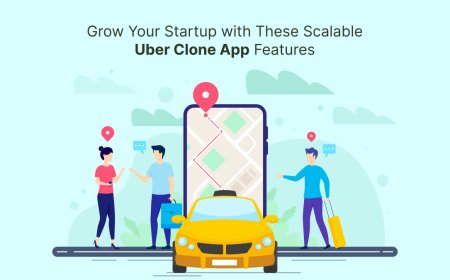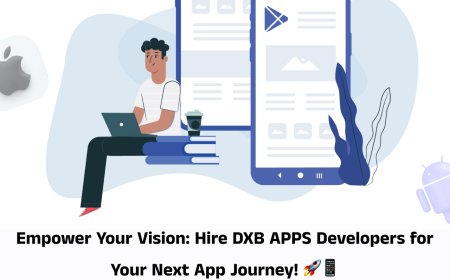AI Voice Bot Development Trends That Will Define the Future of CX in 2025
As customer expectations rise and digital channels evolve, 2025 marks a pivotal year for AI voice bot development in shaping the future of customer experience (CX).

In the ever-evolving digital economy, customer experience (CX) is the ultimate differentiator. As we step deeper into 2025, AI voice bot development has taken center stage in revolutionizing how businesses interact with customers. No longer confined to static IVR systems or basic virtual assistants, todays voice bots are dynamic, intelligent, and deeply integrated into the customer journey.
AI-powered voice bots are transforming every industryfrom eCommerce and banking to healthcare and telecomdelivering faster, more human-like service at scale. This blog explores the major AI voice bot development trends of 2025 and how theyre redefining the future of CX.
1. Hyper-Personalized Voice Interactions
In 2025, personalization is not a luxuryits an expectation. AI voice bots now deliver hyper-personalized experiences by leveraging customer data, past interactions, and behavioral insights.
Key Advancements:
-
Voice bots access CRM data in real time to tailor conversations.
-
Context-aware bots remember previous queries, preferences, and purchase history.
-
Personalized greetings, recommendations, and solutions boost customer satisfaction.
Impact on CX: Customers feel understood, not just answered. This builds trust and loyalty while increasing conversion and retention rates.
2. Emotion-Aware Voice Recognition
Emotion AI is a breakthrough in voice bot development. In 2025, cutting-edge voice bots can analyze tone, pitch, and speech patterns to detect a users emotional state.
Use Cases:
-
A frustrated tone triggers empathy-driven responses or escalation to a human agent.
-
Happy customers receive proactive upsell offers in a friendly tone.
-
Bots adapt speech rate and tone based on user mood.
Impact on CX: By responding with empathy and nuance, emotion-aware bots humanize digital interactions and reduce churn due to poor service experiences.
3. Multilingual and Multicultural Communication
Voice bots are going global. Businesses in 2025 cater to diverse audiences by deploying bots that speak and understand multiple languages, dialects, and regional accents.
Technological Enhancements:
-
NLP engines trained on diverse linguistic datasets.
-
Real-time language detection and seamless switching.
-
Support for code-switching in bilingual regions.
Impact on CX: This inclusivity ensures better engagement, especially in multilingual countries and global markets, leading to higher satisfaction and wider customer reach.
4. Seamless Omnichannel Integration
Todays customers engage across platformsphone, mobile apps, websites, and even smart devices. In 2025, AI voice bots are fully integrated into omnichannel ecosystems, offering consistent, uninterrupted service.
How It Works:
-
Voice bots operate across devices, remembering user preferences and conversation history.
-
Cross-platform transitions are smoothstart on an app, continue on a call, and finish on a smart speaker.
-
Bots coordinate with chatbots and live agents for hybrid support models.
Impact on CX: Customers enjoy cohesive, convenient experiences without repeating themselves, no matter the touchpoint.
5. Voice-Enabled Self-Service Portals
Customers in 2025 prefer autonomyand voice is powering it. Voice bots are transforming self-service by allowing users to complete tasks through simple, intuitive commands.
Examples:
-
Banking customers can check balances or transfer money via voice.
-
Retail shoppers can track orders, request returns, or reorder products hands-free.
-
Telecom users can troubleshoot connectivity issues through guided voice flows.
Impact on CX: Reduced wait times, faster resolutions, and empowered users lead to significantly higher customer satisfaction scores.
6. Enterprise-Level Integration with Backend Systems
AI voice bots are no longer siloed tools. In 2025, theyre tightly integrated with core business systems like CRM, ERP, ITSM, and payment gateways.
Functional Benefits:
-
Bots can pull data from CRMs for personalized support.
-
Trigger workflows such as refund processing or ticket creation.
-
Provide real-time status updates pulled from backend databases.
Impact on CX: Customers get instant, accurate answers and actionswithout delays or manual interventions.
7. Conversational AI Powered by LLMs
The rise of large language models (LLMs) has dramatically enhanced the cognitive abilities of voice bots in 2025.
Features Enabled:
-
Bots understand complex, multi-turn queries.
-
They can engage in human-like, free-flowing conversations.
-
Dynamic knowledge retrieval and summarization of data in real time.
Impact on CX: Customers experience more natural, fluid conversationscomparable to speaking with a skilled human agent.
8. Voice Biometrics for Personalized Security
Security meets convenience with the adoption of voice biometrics. In 2025, users authenticate themselves through voice, enhancing both safety and UX.
Use Cases:
-
Banking voice bots use voiceprints to verify users.
-
Healthcare bots access sensitive records only after biometric authentication.
-
Call centers reduce fraud by replacing passwords and PINs.
Impact on CX: A smoother, faster, and more secure experience without compromising privacy or compliance.
9. Real-Time Analytics and Feedback Loop
Modern voice bots come equipped with advanced analytics that track every interaction, user behavior, and sentiment in real time.
Metrics Tracked:
-
Call abandonment rates
-
Sentiment trends over time
-
Resolution success rate
-
Frequently asked queries and escalation patterns
Impact on CX: Businesses continuously improve the bots performance and proactively address friction points, enhancing the customer journey.
10. Proactive Voice Engagement
2025 is not just about reactive supportAI voice bots are becoming proactive agents of engagement.
Applications:
-
Notifying customers about delays, outages, or new offers.
-
Conducting feedback surveys or follow-ups.
-
Sending reminders or alerts via voice assistants.
Impact on CX: Builds a brand perception of care and responsiveness, turning passive support into active relationship-building.
Industry Applications of Voice Bot Trends
Retail & E-Commerce
Voice-driven recommendations, reordering, and support elevate convenience and increase repeat purchases.
Healthcare
Patients use voice bots for check-ups, lab results, and medication reminders with built-in empathy.
Banking & Insurance
Bots handle transactions, claims, and policy queries with biometric security and real-time integration.
Telecom
Users troubleshoot issues or change plans via fast, guided voice flows instead of navigating call centers.
Travel & Hospitality
Bots help with booking, itinerary changes, and multilingual customer support worldwide.
The Future of CX Is Voice-Led and AI-Driven
The trends outlined above arent just enhancementsthey represent a radical shift in how customer experience is defined and delivered in 2025. Businesses that embrace these trends early are already reaping the benefits of:
-
Reduced support costs
-
Enhanced customer retention
-
24/7 global availability
-
Increased customer satisfaction and CSAT scores
AI voice bot development is now a strategic priority, not an experimental add-on.
Conclusion: Prepare for a Voice-First CX Landscape
In 2025, voice is no longer just a support toolits a CX powerhouse. AI voice bots are smarter, faster, and more empathetic than ever, setting a new standard for customer experience.
Organizations that adopt AI voice bot development with a clear strategyfocusing on personalization, security, integration, and emotional intelligencewill lead the charge in delivering unforgettable customer experiences.


























